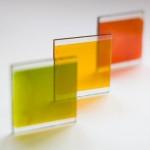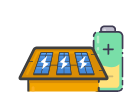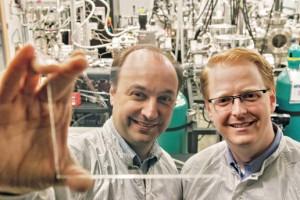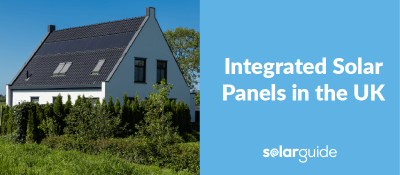Windows could become solar panels in the future
Scientists have created a new transparent solar cell which could be used to develop windows that have the ability to generate power, in essence window and solar PV panel all in one.
 Researchers at the University of California, Los Angeles (UCLA) have created a new kind of polymer solar cell (PSC) from a photo-active plastic which absorbs infra-red light and converts it into an electrical current and is also nearly 70 percent transparent to the naked eye.
Researchers at the University of California, Los Angeles (UCLA) have created a new kind of polymer solar cell (PSC) from a photo-active plastic which absorbs infra-red light and converts it into an electrical current and is also nearly 70 percent transparent to the naked eye.
There is worldwide interest in PSC's according to Yang Yang, a professor of materials science and engineering at UCLA. "These results open the potential for visibly transparent polymer solar cells as add-on components of portable electronics, smart windows and building-integrated photovoltaics and in other applications" he says. "Our new PSCs are made from plastic-like materials and are lightweight and flexible,’ he said. ‘More importantly, they can be produced in high volume at low cost."
PSC's have considerable advantages over conventional solar cell technologies and have broader applications within the solar sector. Building Integrated Photovoltaic (BIPV) is the obvious example while another possible application could be portable electronics with integrated PV chargers. Yang Yang also thinks that one day there could be transparent computers.
Previous attempts to develop transparent PSC's have resulted in panels with low visible light transparency and/or low device efficiency, however the team at UCLA's California Nanosystems Institute with the assistance of the UCLA Henry Samuel School of Engineering and Applied Science and also the Department of Chemistry and Biochemistry have produced high performance visibly transparent PSC's by incorporating near-infrared light sensitive polymer with silver nanowire composite film. The polymer absorbs infra-red light but is less sensitive to visible light.
Silver nanowires are nanowire electrodes that are conducive and flexible and which become photovoltaic after being coated with titanium dioxide nanoparticles. They can be incorporated into the PSC by using a solution process which involves a big roll of polymer being immersed in a vat of titanium dioxide coated silver nanowires with a period of curing to follow.
The team have also developed a transparent conductor from silver nanowire and titanium dioxide nanoparticles which has replaced the conventional opaque metal electrode. This also allows for economic fabrication via solution processing. The result is a power-conversion efficiency level of 4 per cent for solution processed and visibly transparent PSC's. This is of course far below that of conventional PV but the flexibility of the PSC's along with their ability to be mass produced at low cost is a definite advantage. Ultimately, this development means that giant skyscrapers could be covered in energy generating glass which will definitely help with both finances and carbon emissions.
Find local, MSC certified Solar Installers
Start your quote
Find local, MSC certified Solar Installers















